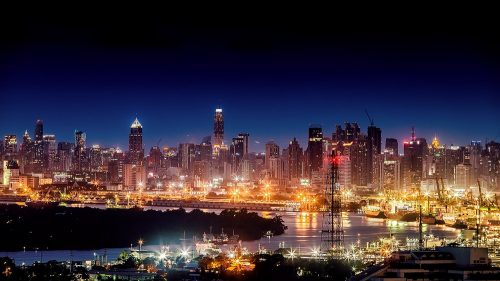Noise in photography is those awkwardly colored tiny pixels (grains or specks) that render an often very undesirable look to the image. Noise happens commonly when you shoot at high iso or if your photo is very underexposed or when you expose the sensor for a very long time.
Noise, as the word suggests, can make the image look very awkward. Although noise can be reduced while post processing, if it goes beyond a certain limit, it renders the image useless. So what can you do to avoid noisy photos? Get them better in camera as much as possible!

Image by It's me Neosiam
Here are five guidelines to help you shoot images that are clean and noise-free
1. Shoot at lower iso: As much as possible, shoot at lower ISOs; this is not always possible when you shoot in low light conditions. In order to compensate for this, you can open the aperture wide where possible and put your camera on a tripod to avoid shake due to slower shutter speeds.
2. Get your exposure correct: Make sure that you shoot your images with correct exposure or slightly to the right, as underexposed areas can reveal noise when you brighten the shadows in post-processing (keep an eye on your histogram). If you think there are wide tonal variations in the image from very dark to very light, compensate for it by either bracketing exposures and merging them later or using graduated filters (in case of landscapes) to compensate for very bright light. In case of portraits, still life, etc., make use of artificial light or reflectors to illuminate your subject correctly.
3. Make use of in-camera noise reduction: Most cameras these days come with noise reduction functions like low light noise reduction, high iso noise reduction or long exposure noise reduction. Depending on how you are shooting, choose the specific function to get rid of noise in the camera.
4. Always shoot RAW: When shooting at higher ISOs, an uncompressed raw file can help you to post-process the image with greater flexibility and easily remove noise, whereas a jpeg image is compressed, generates noise and will not give you much convenience while post-processing.
5. Avoid very long exposures as much as possible, as this can heat up the camera’s sensor creating noise.
If you still have some noise in your image and you need to get rid of them, you will have to get it done while post-processing. If you want to learn how to process raw files effectively, make sure you check out Lightroom Made Easy by Phil Steel.





1 Comment
It is not “RAW” files, but raw files. Raw is not an acronym or the name of a file format. Different cameras store raw data in files with extensions such as NEF for Nikon or CR2 for Canon.